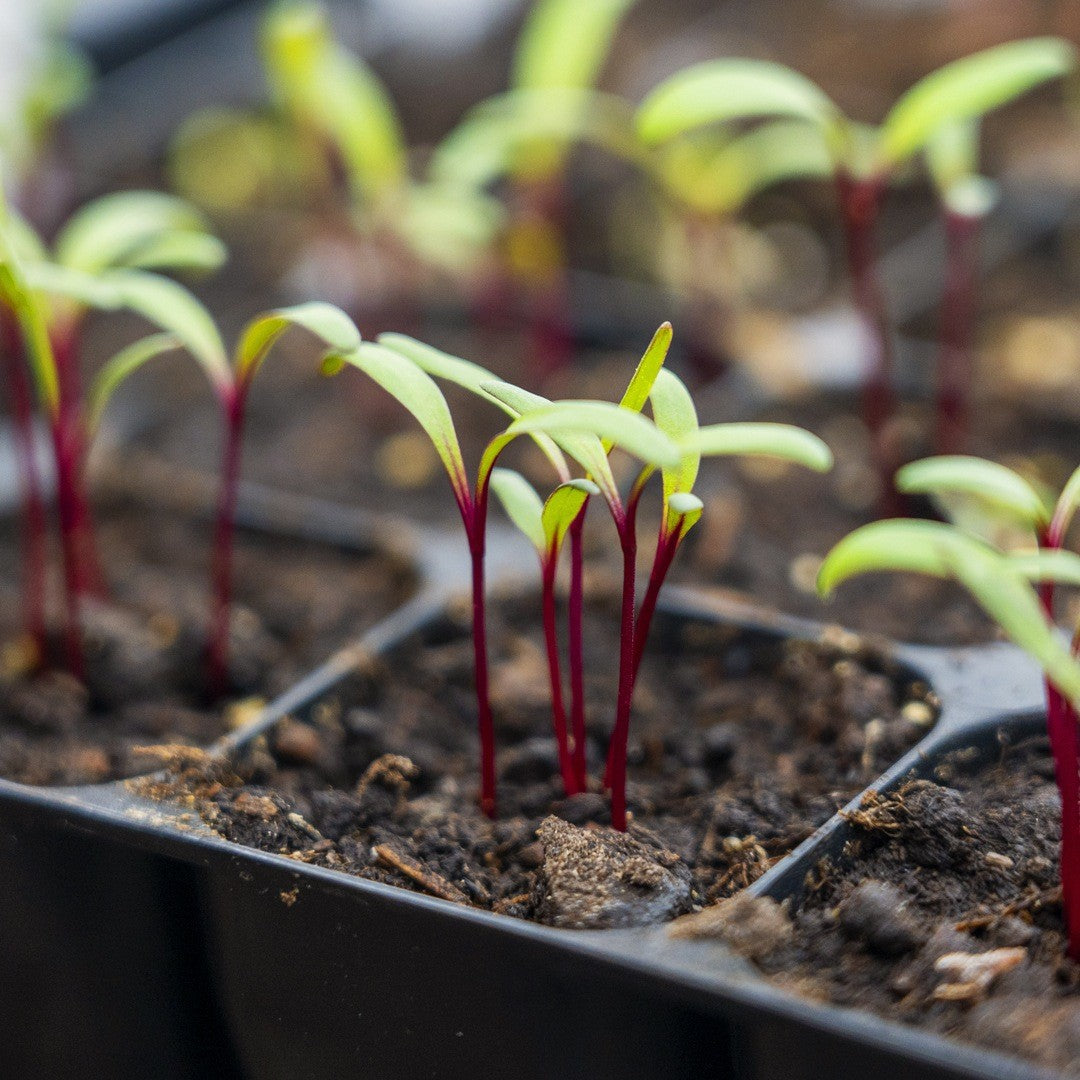With so many kinds of propagation trays it gets hard to understand what will work best for you. We are not only talking about module trays or seed trays but also soil block makers and nursery pots. I made a blog post about my journey to finding the Containerwise trays. If you want to learn more about why the Containerwise Trays are my personal favorite trays you can read that blog post. My Search For The Best Propagation Tray

Containerwise Module trays
What Containerwise Tray should you get?
Let’s chat about why we use Module trays and which tray you need for what plant. Currently on offer are 7 different varieties of the trays. They all have their own usage and pros and cons.
My personal favorite is the 40 cell shallow module tray. It’s perfect for starting out almost all seeds besides the deep-rooted vegetables like peas and artichokes. I use the 40L for starting beetroot, onions, radishes, cabbages, tomatoes, and brassicas.
But some plant need more time in the tray or just have such a quickly growing root system they rather have a deep tray. Let’s list all the trays on offer with their pros, cons, and specs.

The 15 Cell shallow tray
Cell Size
69mm x 69mm x 90mm
Best Application
Tomatoes, Eggplant, Artichoke, Peppers
Plants per m²
204
Drainage Hole
24mm
PROS
Big cell size
Room for plant foliage
Can hold plants for a long time
CONS
Few plants per m²
Need much compost

The 28 Cell shallow tray
Cell Size
49mm x 49mm x 65mm
Best Application
Brassicas, Corn, Zucchini, Pumpkins, Winter Squash, Cucumbers
Plants per m²
372
Drainage Hole
22mm
PROS
Big cell size
Can hold plants for a long time
Good drainage
CONS
Few plants per m²

The 40 Cell shallow tray
Cell Size
42mm x 42mm x 55mm
Best Application
Beetroot, Onion, Radish
Plants per m²
531
Drainage Hole
20mm
PROS
Average cell size
Many plants per m²
Good drainage
CONS
Not for deep rooting plants

The 77 Cell shallow tray
Cell Size
30mm x 30mm x 50mm
Best Application
Spinach, Lettuce, Herbs
Plants per m²
1023
Drainage Hole
18mm
PROS
Many plants per m²
Good drainage
Great for small sprouting plants
CONS
Not for deep rooting plants
Small cell size

The 60 Cell Charles Dowding shallow tray
Cell Size
29.5mm x 29.5mm x 44mm
Best Application
Spinach, Lettuce, Herbs
Plants per m²
815
Drainage Hole
14mm
PROS
Many plants per m²
Good drainage
CONS
Not for deep rooting plants
Small cell size

The 28 Cell Deep tray
Cell Size
49mm x 49mm x 120mm
Best Application
Peas, zucchini, Pumpkins and trees like Oaks and walnuts.
Plants per m²
372
Drainage Hole
22mm
PROS
Many plants per m²
Space for root growth
Extreem deep
CONS
Needs loads loads loads of compost

The 40 Cell Deep tray
Cell Size
42mm x 42mm x 85mm
Best Application
Peas, Artichoke, Eggplants, Pumpkins, Beans, cabbages
Plants per m²
531
Drainage Hole
20mm
PROS
Many plants per m²
Space for root growth
Extra deep
CONS
Needs quite some compost
Conclusion
Overall I’m a big fan of the Containerwise trays because of their strong hold, ease of use and good water drainage.
My personal favourite is the 40 cell shallow trays because of its for me perfect size to start out my vegetables and the ease of pushing out the cell because of the big drainage holes.


